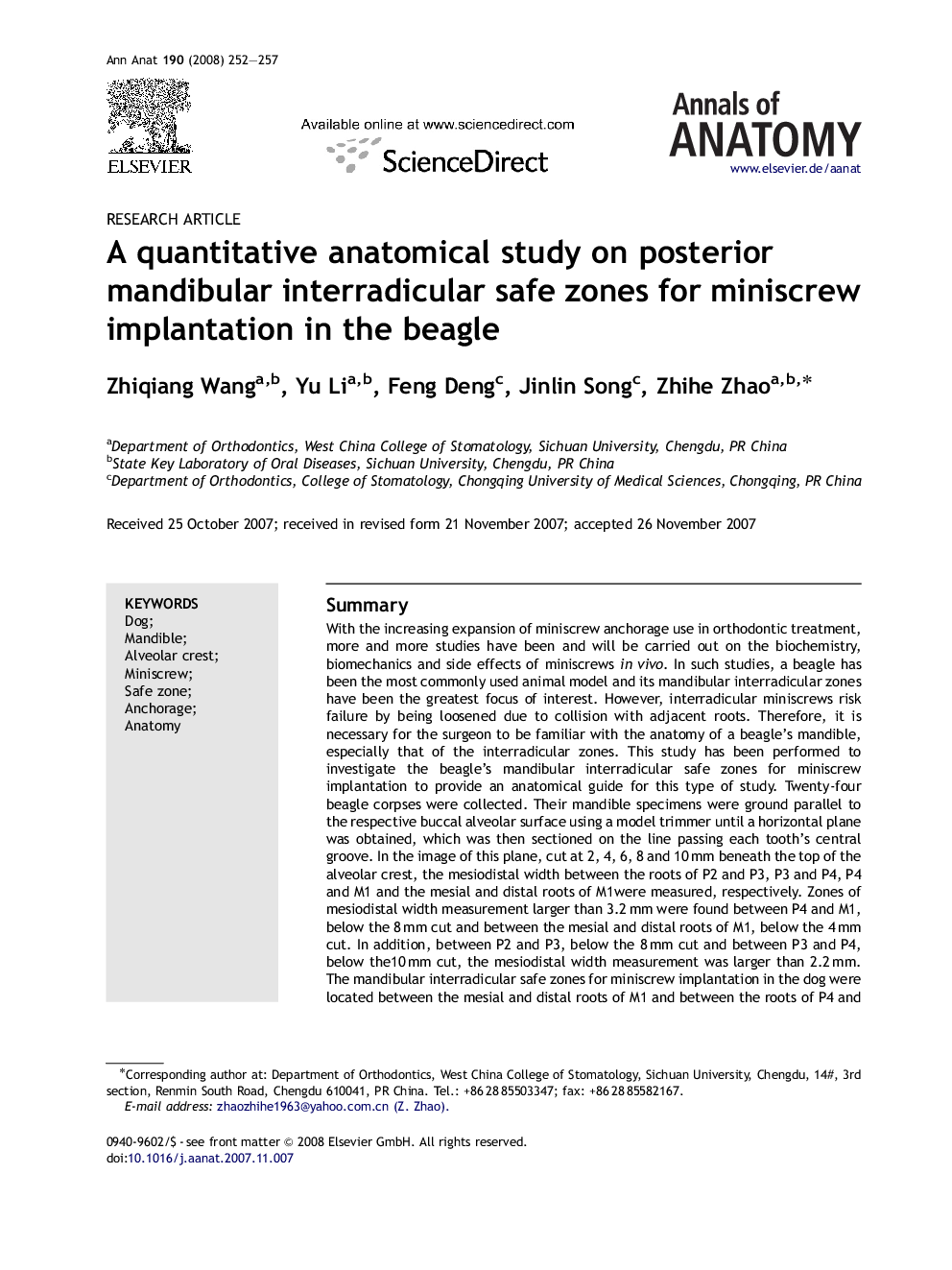| کد مقاله | کد نشریه | سال انتشار | مقاله انگلیسی | نسخه تمام متن |
|---|---|---|---|---|
| 8462738 | 1549039 | 2008 | 6 صفحه PDF | دانلود رایگان |
عنوان انگلیسی مقاله ISI
A quantitative anatomical study on posterior mandibular interradicular safe zones for miniscrew implantation in the beagle
دانلود مقاله + سفارش ترجمه
دانلود مقاله ISI انگلیسی
رایگان برای ایرانیان
کلمات کلیدی
موضوعات مرتبط
علوم زیستی و بیوفناوری
بیوشیمی، ژنتیک و زیست شناسی مولکولی
بیولوژی سلول
پیش نمایش صفحه اول مقاله

چکیده انگلیسی
With the increasing expansion of miniscrew anchorage use in orthodontic treatment, more and more studies have been and will be carried out on the biochemistry, biomechanics and side effects of miniscrews in vivo. In such studies, a beagle has been the most commonly used animal model and its mandibular interradicular zones have been the greatest focus of interest. However, interradicular miniscrews risk failure by being loosened due to collision with adjacent roots. Therefore, it is necessary for the surgeon to be familiar with the anatomy of a beagle's mandible, especially that of the interradicular zones. This study has been performed to investigate the beagle's mandibular interradicular safe zones for miniscrew implantation to provide an anatomical guide for this type of study. Twenty-four beagle corpses were collected. Their mandible specimens were ground parallel to the respective buccal alveolar surface using a model trimmer until a horizontal plane was obtained, which was then sectioned on the line passing each tooth's central groove. In the image of this plane, cut at 2, 4, 6, 8 and 10Â mm beneath the top of the alveolar crest, the mesiodistal width between the roots of P2 and P3, P3 and P4, P4 and M1 and the mesial and distal roots of M1were measured, respectively. Zones of mesiodistal width measurement larger than 3.2Â mm were found between P4 and M1, below the 8Â mm cut and between the mesial and distal roots of M1, below the 4Â mm cut. In addition, between P2 and P3, below the 8Â mm cut and between P3 and P4, below the10Â mm cut, the mesiodistal width measurement was larger than 2.2Â mm. The mandibular interradicular safe zones for miniscrew implantation in the dog were located between the mesial and distal roots of M1 and between the roots of P4 and M1, where there was enough mesiodistal width. Alveolar bone was relatively narrow between P2 and P3, P3 and P4, where care must be taken during implanting.
ناشر
Database: Elsevier - ScienceDirect (ساینس دایرکت)
Journal: Annals of Anatomy - Anatomischer Anzeiger - Volume 190, Issue 3, 11 June 2008, Pages 252-257
Journal: Annals of Anatomy - Anatomischer Anzeiger - Volume 190, Issue 3, 11 June 2008, Pages 252-257
نویسندگان
Zhiqiang Wang, Yu Li, Feng Deng, Jinlin Song, Zhihe Zhao,